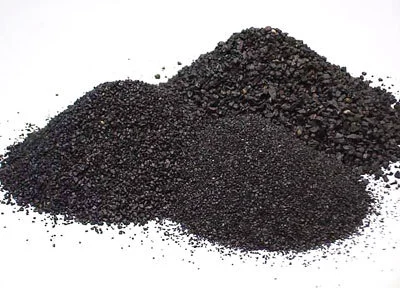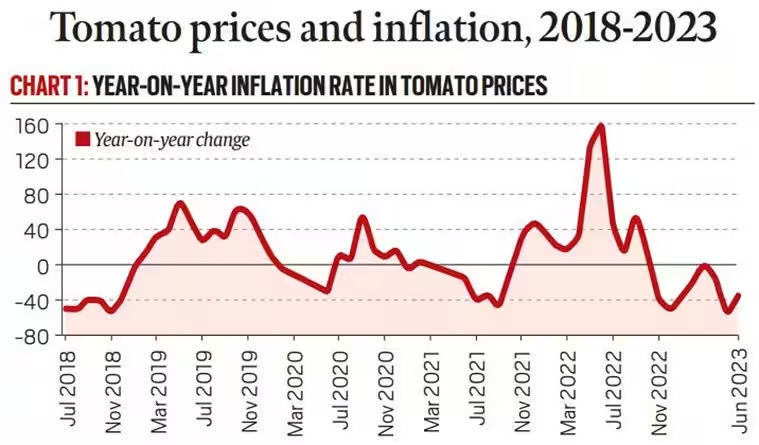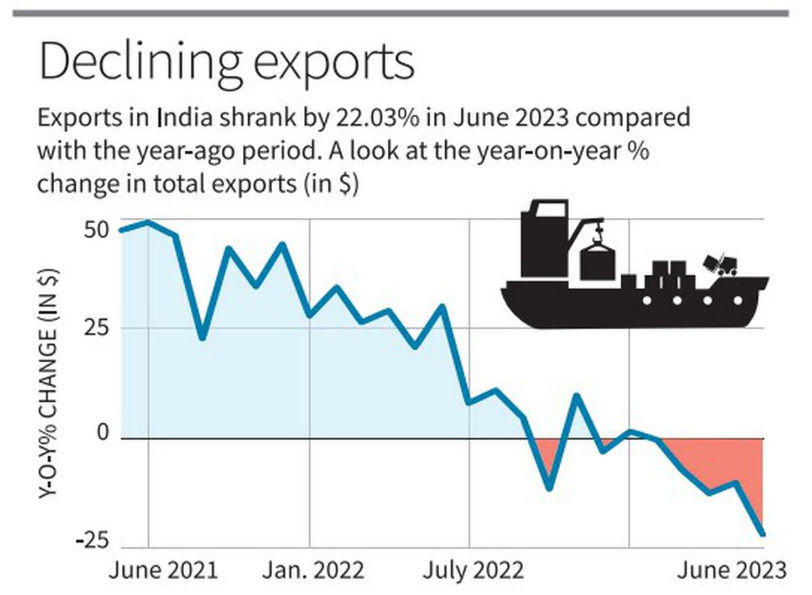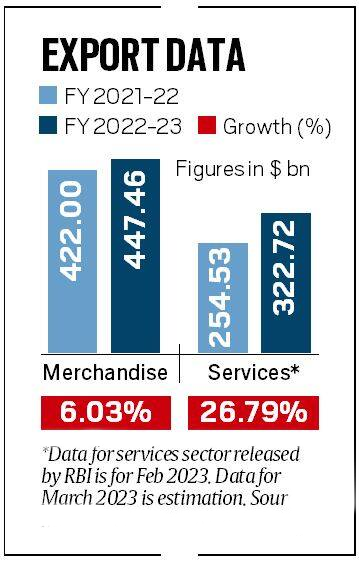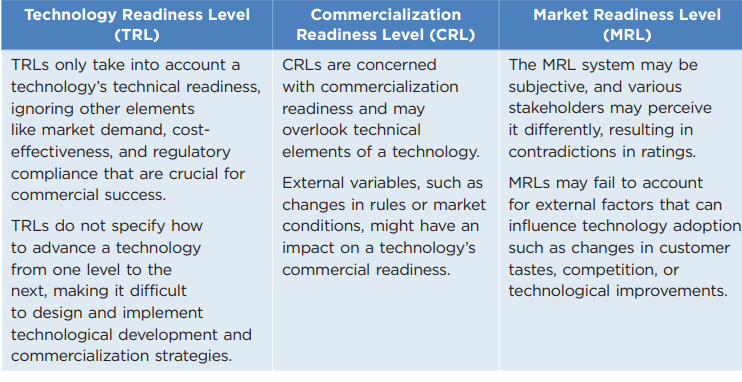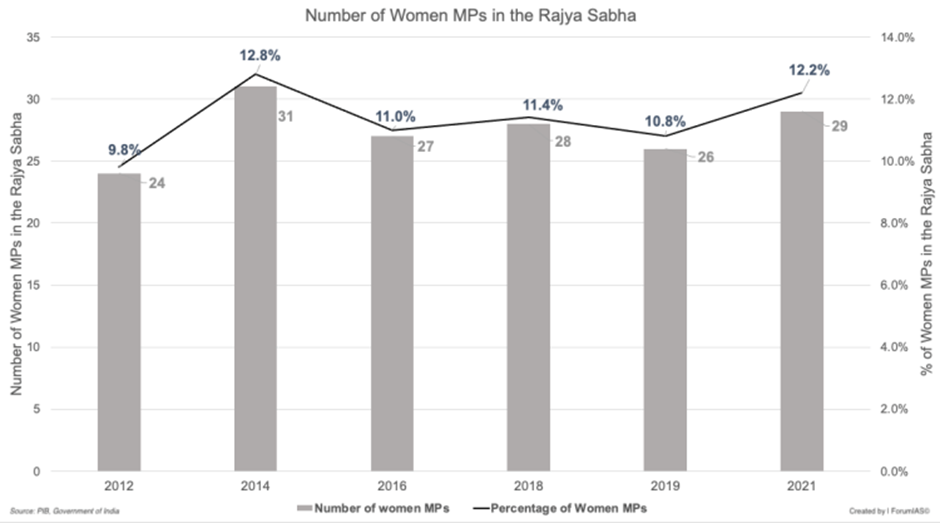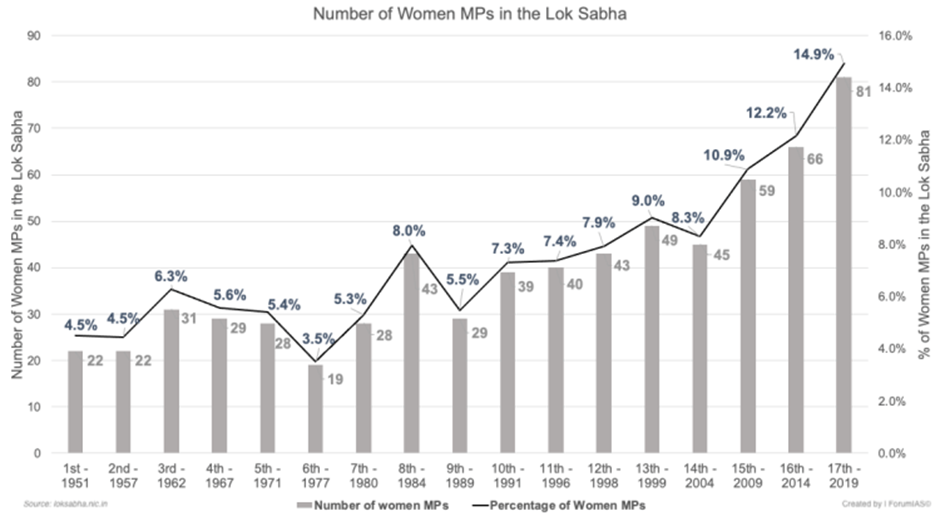Science & Technology
Steel Slag Road Technology
For Prelims: Steel Slag Road technology, Steel Slag, Waste to Wealth mission
For Mains: Steel Slag Road technology its significance in Waste to Wealth mission, Technological advancements in Road Infrastructure.
Why in News?
The innovative Steel Slag Road technology developed by the Central Road Research Institute (CRRI), New Delhi in collaboration with the Ministry of Steel and major steel manufacturing companies is making significant strides towards the 'Waste to Wealth' mission.
- This technology is revolutionizing road construction and addressing the environmental challenges of steel slag waste.
What is Steel Slag Road Technology?
- About:
- Steel slag road technology is a novel method of using steel slag, the waste generated during steel production, to build more robust and more durable roads.
- The technology involves processing the steel slag to remove impurities and metal content and then using it as an aggregate for road base or sub-base layers.
- The processed steel slag has high strength, hardness, abrasion resistance, skid resistance, and drainage capacity, making it suitable for road construction.
- It facilitates the large-scale utilization of waste steel slag generated by steel plants, effectively managing the approximately 19 million tonnes of steel slag produced in India.
- Advantages:
- Eco-friendly Waste Utilization:
- By using waste steel slag in road construction, the technology offers an eco-friendly approach to managing industrial waste.
- This reduces the burden on landfills and minimizes the environmental impact associated with steel slag disposal.
- By using waste steel slag in road construction, the technology offers an eco-friendly approach to managing industrial waste.
- Cost-effective and Durable:
- Steel slag roads have proven to be cost-effective, as they are approximately 30% cheaper to construct compared to conventional paving methods.
- Furthermore, these roads exhibit exceptional durability and resist weather changes resulting in significantly reduced maintenance costs.
- Steel slag roads have proven to be cost-effective, as they are approximately 30% cheaper to construct compared to conventional paving methods.
- Reduced Reliance on Natural Resources:
- Traditional road construction heavily relies on natural ballast and aggregates, depleting precious natural resources.
- The Steel Slag Road technology eliminates the need for natural materials, helping conserve valuable resources and preserve natural ecosystems.
- Addressing the Steel Slag Waste Challenge:
- India is the world's second-largest steel-producing country, generating around 19 million tonnes of steel slag as solid waste. This figure is projected to increase to a staggering 60 million tonnes by 2030, with each tonne of steel production resulting in about 200 kg of steel slag waste.
- The lack of efficient disposal methods has led to the accumulation of huge slag piles around steel plants, contributing to water, air, and land pollution.
- India is the world's second-largest steel-producing country, generating around 19 million tonnes of steel slag as solid waste. This figure is projected to increase to a staggering 60 million tonnes by 2030, with each tonne of steel production resulting in about 200 kg of steel slag waste.
- Eco-friendly Waste Utilization:
- Successful Implementations:
- Surat's Technological Marvel:
- The first road constructed using the Steel Slag Road technology in Surat, Gujarat, has garnered recognition for its technological excellence.
- Border Roads Organization's Contribution:
- The technology's success extended to the India-China border, where the Border Roads Organization, along with CRRI and Tata Steel, constructed a steel slag road in Arunachal Pradesh.
- This project demonstrated the technology's suitability for challenging terrains and critical national infrastructure.
- Surat's Technological Marvel:
- Promoting Nationwide Adoption:
- The success of the Steel Slag Road technology has attracted the attention of various government agencies and ministries.
- In collaboration with the Ministry of Science and Technology and the Ministry of Road Transport and Highways, the Ministry of Steel is actively working to promote the widespread usage of this technology across the country.
- By fostering collaborative efforts, India aims to lead the way in sustainable road infrastructure development and achieve its 'Waste to Wealth' mission.
- The success of the Steel Slag Road technology has attracted the attention of various government agencies and ministries.
Waste to Wealth Mission
- This mission will identify, develop, and deploy technologies to treat waste to generate energy, recycle materials, and extract worth.
- The Waste to Wealth Mission is one of the nine national missions of the Prime Minister’s Science, Technology, and Innovation Advisory Council (PM-STIAC).
- The mission will assist and augment the Swachh Bharat and Smart Cities projects to create circular economic models that are financially viable for waste management to streamline waste handling in the country.
Agriculture
Tomatoes Price Volatility
For Prelims: Tomato Mosaic Virus (ToMV) and the Cucumber Mosaic Virus (CMV), Inflation Rate
For Mains: Food Inflation and issues, Impact of extreme weather conditions, Pest attacks, and viruses (ToMV and CMV) on tomato yields, Role of the Government in managing prices and stabilizing the market.
Why in News?
Tomatoes, a staple vegetable in Indian households, have become a cause for concern due to their soaring prices.
- The sudden increase in tomato prices from ₹20 to ₹40 per kg in June 2022, reaching ₹100 per kg in July 2023, has raised questions about the reasons behind this price volatility.
- Despite the soaring prices, the inflation rate for tomatoes is surprisingly negative, creating a puzzling economic phenomenon known as #Tomato-nomics.
Why are Tomato Prices High?
- Tomatoes Production in India:
- Tomato production is regionally concentrated in states like Andhra Pradesh, Madhya Pradesh, Karnataka, Odisha, and Gujarat, collectively accounting for approximately 50% of total production.
- India witnesses two main tomato crops annually - kharif and rabi.
- The Kharif crop is available from September, while the rabi crop hits the market between March and August.
- July-August is a lean production period for tomatoes as they fall between yields.
- The Kharif crop is available from September, while the rabi crop hits the market between March and August.
- Despite being one of the most cultivated vegetables, tomato production has been declining since its peak in 2019-20 at 21.187 million tonnes (MT).
- Reasons Behind the High Tomato Prices:
- Extreme Weather:
- Heatwaves and delayed monsoons in April and May led to pest attacks on tomato crops, affecting their quality and commercial realization.
- As a result, farmers received low prices for their produce in the months leading up to June.
- Heatwaves and delayed monsoons in April and May led to pest attacks on tomato crops, affecting their quality and commercial realization.
- CMV and ToMV Virus:
- The recent decline in tomato crops and the surge in tomato prices in Maharashtra, Karnataka, and other South Indian states can be attributed to the infestation of two plant viruses: the Tomato Mosaic Virus (ToMV) and the Cucumber Mosaic Virus (CMV).
- These viruses have caused partial to complete crop losses in tomato plantations over the last three years.
- As both viruses have a broad host range and can lead to nearly 100% crop loss if not treated in time, they have significantly impacted tomato yields, resulting in a rise in tomato prices.
- The recent decline in tomato crops and the surge in tomato prices in Maharashtra, Karnataka, and other South Indian states can be attributed to the infestation of two plant viruses: the Tomato Mosaic Virus (ToMV) and the Cucumber Mosaic Virus (CMV).
- Low Commercial Realization:
- Farmers faced the challenge of low commercial realization for their tomato crops in the months leading up to the price surge.
- Between December 2022 and April 2023, many farmers received prices as low as ₹6 to ₹11 per kg for their produce.
- This led to a situation where farmers had to sell their crops at unprofitable rates or even abandon their produce, resulting in a shortage of supply.
- Farmer Shifting from Tomato Production:
- The low prices received by farmers in the previous year led to a significant impact on cultivation patterns.
- Many farmers who contribute substantially to tomato supplies shifted their focus to cultivating other crops fetched higher prices in the market, motivating farmers to opt for alternative crops.
- This shift in cultivation resulted in reduced tomato production, further aggravating the supply crunch and contributing to the surge in prices.
- Supply Crunch:
- Inferior-quality tomatoes forced many farmers to sell at low prices or abandon their crops, resulting in a crunch in tomato supply.
- Incessant rains further impacted the new crops and transportation to non-growing regions.
- Regional Drop in Production:
- Tamil Nadu, Gujarat, and Chhattisgarh witnessed a 20% drop in tomato production, exacerbating the shortage.
- Extreme Weather:
- Impacts of High Tomato Prices:
- Inflationary Pressures: The volatility of tomato prices has historically contributed to overall inflation levels in the country, affecting consumers' purchasing power.
- CPI Impact: Tomato's price fluctuations have significant implications for the Consumer Price Index (CPI), making it a challenge for policymakers to control inflation.
- Economic Distress: The high prices put a strain on households' budgets, especially for low-income families heavily reliant on tomatoes as a dietary staple.
- Possible Solutions for Reducing Tomato Prices:
- Improve Value and Supply Chains: Enhance value and supply chains to address perishability and transportation issues.
- Increase Processing Capacity: Convert tomatoes into paste and puree during peak seasons to ensure adequate supply during lean periods.
- Encourage Direct Sales: Promote direct sales by Farmer Producers Organizations to provide farmers with a larger share of consumer prices.
- Promote Cultivation in Poly Houses and Greenhouses: Encourage cultivation in controlled environments to control pest attacks and increase yields.
Why is the Inflation Rate for Tomatoes Negative?
- High Base Effect:
- The negative inflation rate is a result of a high base effect. The index value for tomatoes in June 2022 was significantly higher due to soaring prices at that time.
- In June 2023, despite a spike in prices, the index value was much lower compared to the previous year, leading to negative inflation.
- Calculation Method:
- In India, the inflation rate is calculated on a year-on-year basis, comparing the index value for a specific month to the same month in the previous year.
- The index value for June 2023 (191) is significantly lower than the index value for June 2022 (293), showing a 35% decrease.
- The decline in index value from June 2022 to June 2023 led to negative inflation, despite a recent increase in tomato prices.
- Temporary Price Surge:
- Tomato prices experienced a rapid increase within a short period, reaching Rs 100 per kg in June 2023.
- However, this surge was not sustained, and prices began to decline afterward, contributing to the negative inflation rate.
Governance
Empowering the Tribal Society
For Prelims: Scheduled Tribe, Constitutional Provisions Related to Scheduled Tribes, Related Initiatives
For Mains: Safeguards Provided by the Indian Constitution for Scheduled Tribes, Issues Faced By Tribes in India, Ways to Empower the Tribal Society of India
Why in News?
Recently, the Minister of Culture, Tourism and Development of North-Eastern Region in Rajya Sabha has pointed out various schemes and programmes that are introduced by the government with an aim of protecting, preserving, and promoting the country's tribal cultural heritage.
What are the Recent Steps Taken for Empowerment of Tribes in India?
- Zonal Cultural Centres (ZCCs): The Government of India has established seven ZCCs which are responsible for organising a wide range of cultural activities and programs across the nation on a regular basis, which will help in conserving tribal languages and culture across the country as well.
- The councils are set up with headquarters at Patiala, Nagpur, Udaipur, Prayagraj, Kolkata, Dimapur and Thanjavur.
- Regional Festivals: Under the Ministry of Culture, several Rashtriya Sanskriti Mahotsavas and a minimum of 42 regional festivals are organised through the ZCCs every year.
- To support these activities, the Government provides Grant-in-aid to all ZCCs.
- Promotion of Tribal Languages: The government also provides grants to State Tribal Research Institutes for the promotion of tribal languages, the development of bilingual primers for the preservation of tribal languages and the promotion of tribal literature.
- Tribal Research Information, Education, Communication and Events (TRU-ECE) Scheme: Under this, financial assistance is provided to reputed Institutions for TRU-ECE scheme with the aim to promote tribal culture, artifacts, customs and traditions of tribal communities.
- Eklavya Model & Museums: Under the Azadi ka Amrit Mahotsav, the Ministry of Tribal Affairs has resolved to establish nearly 750 Eklavya Model Residential Schools to support the education of tribal students.
- The government has also sanctioned ten tribal freedom fighter museums in order to acknowledge the heroic and patriotic deeds of tribal people.
- Adivasi Grants Management System (ADIGRAMS): It monitors the physical and financial progress of the grants given by the Ministry to States and can track the actual utilisation of funds.
- Janjatiya Gaurav Divas: In 2021, it was decided to celebrate 15th November of every year as Janjatiya Gaurav Divas to mark the birth anniversary of tribal freedom fighter Birsa Munda.
What are Other Related Government Initiatives?
What are the Constitutional Provisions Related to Scheduled Tribes?
- The Constitution of India does not endeavor to define the term 'tribe', however, the term Scheduled Tribe' was inserted in the Constitution through Article 342 (i).
- It lays down that 'the President may, by public notification, specify the tribes or tribal communities or parts of or groups within the tribes or tribal communities or parts which shall, for the purposes of this Constitution, be deemed to be Scheduled Tribes.
- The Fifth Schedule of the Constitution provides for the setting up a Tribes’ Advisory Council in each of the States having Scheduled Areas.
- Educational & Cultural Safeguards:
- Article 15(4): Special provisions for the advancement of other backward classes (it includes STs).
- Article 29: Protection of the Interests of Minorities (it includes STs).
- Article 46: The State shall promote, with special care, the educational and economic interests of the weaker sections of the people, and in particular, of the Scheduled Castes, and the Scheduled Tribes, and shall protect them from social injustice and all forms of exploitation.
- Article 350: Right to conserve a distinct Language, Script or Culture.
- Political Safeguards:
- Article 330: Reservation of seats for STs in the Lok Sabha,
- Article 332: Reservation of seats for STs in State Legislatures.
- Article 243: Reservation of seats in Panchayats.
- Administrative Safeguard:
- Article 275: It provides for the grant of special funds by the Union Government to the State Government for promoting the welfare of Scheduled Tribes and providing them with a better administration.
What Issues Are Faced by the Tribes in India?
- Land Rights: One of the most significant issues faced by tribal communities is the lack of secure land rights. Many tribes live in forest areas or remote regions where their traditional rights to land and resources are often not recognized, leading to displacement and land alienation.
- Socio-economic Marginalisation: Tribal populations often experience socio-economic marginalisation, including poverty, lack of access to quality education, healthcare, and basic amenities like clean water and sanitation facilities.
- Education Gap: Education levels among tribal populations are generally lower than the national average. Lack of access to quality education, cultural barriers, and language differences can hinder the educational development of tribal children.
- Exploitation and Bonded Labor: Some tribal communities are vulnerable to exploitation, bonded labor, and human trafficking, especially in remote regions where law enforcement is weak.
- Cultural Erosion: Rapid urbanisation and modernisation can lead to the erosion of tribal cultures, languages, and traditional practices. The younger generation may face challenges preserving their cultural identity.
- Lack of Representation: Despite protective measures, tribal communities often face inadequate political representation and lack a strong voice in decision-making processes that concern their welfare and rights.
Way Forward
- Land and Resource Rights: Recognising and securing land and resource rights for tribal communities is crucial to their well-being. Displacement and land alienation have been significant issues faced by tribes, and addressing these concerns is essential for their sustenance.
- Education and Skill Development: Providing quality education and skill development programs tailored to the needs and cultural context of tribal communities can enable them to access better livelihood opportunities and participate more actively in the mainstream economy.
- Healthcare and Sanitation: Ensuring access to proper healthcare facilities and sanitation is essential to improving the overall health and well-being of tribal communities, who often face unique health challenges due to geographical isolation and limited access to services.
- Empowerment of Women: Recognising the crucial role of women in tribal societies and promoting their active participation in decision-making processes, economic activities, and community development.
- Promotion of Indigenous Culture: Preserving and promoting tribal languages, art, traditions, and cultural practices are vital to maintaining the rich diversity of India's heritage.
- Participation and Inclusion: Encouraging tribal representation and participation in local governance and policy-making bodies, which will help ensure their voices are heard in matters that directly affect their lives.
UPSC Civil Services Examination Previous Year Question (PYQ)
Prelims
Q. Under which Schedule of the Constitution of India can the transfer of tribal land to private parties for mining be declared null and void? (2019)
(a) Third Schedule
(b) Fifth Schedule
(c) Ninth Schedule
(d) Twelfth Schedule
Ans: (b)
Q. If a particular area is brought under the Fifth Schedule of the Constitution of India, which one of the following statements best reflects the consequence of it? (2022)
(a) This would prevent the transfer of land of tribal people to non-tribal people.
(b) This would create a local self-governing body in that area.
(c) This would convert that area into a Union Territory.
(d) The State having such areas would be declared a Special Category State.
Ans: (a)
Mains
Q. How do you explain the statistics that show that the sex ratio in Tribes in India is more favourable to women than the sex ratio among Scheduled Castes? (2015)
Economy
India's Export Outlook
For Prelims: India's Export Outlook, Gross Domestic Product, World Trade Organization, Foreign Trade Policy, Trade Infrastructure for Export Scheme (TIES).
For Mains: India's Export Outlook, challenges and Way forward.
Why in News?
The Ministry of Commerce and Industry, Government of India has decided to adopt a Target Range Approach in announcing Export Goals for FY 2023-24 instead of a single number due to ongoing global uncertainties.
- Despite achieving a record USD 450 billion in merchandise exports during 2022-23, India's outbound shipments have faced significant challenges in the first quarter of 2023-2024.
What is the Target Range Approach Adopted by the Government?
- Targets Based on Four Key Parametres:
- Overall Target of USD 2 Trillion by 2030:
- As per India’s new Foreign Trade Policy (FTP) 2023, it aims to achieve a total export of USD 2 trillion with services and goods exports accounting for a trillion dollars each by 2030.
- This long-term objective will be considered while setting the current year's targets.
- Import to GDP Ratio of Importing Countries:
- The targets will take into account the import to GDP (Gross Domestic Product) ratio of the countries that are major importers of Indian goods.
- This ratio will provide insights into the potential demand for Indian products in various international markets.
- Export to GDP Ratio of India:
- The export to GDP ratio of India itself will be assessed to gauge the country's export potential and capacity.
- Trend Growth of Past Years:
- The past growth trends in exports will be analyzed to understand the trajectory of India's trade performance and consider it in setting achievable targets.
- Overall Target of USD 2 Trillion by 2030:
- Target Range:
- In FY 202-23, exports amounted to USD 450 billion. Based on this figure and assuming a conservative growth rate of 10%, trade experts suggest the following potential target range:
- Lower End of Range: USD 451 billion (Slightly above the previous year's exports)
- Upper End of Range: USD 495 billion (Assuming a 10% growth rate).
- In FY 202-23, exports amounted to USD 450 billion. Based on this figure and assuming a conservative growth rate of 10%, trade experts suggest the following potential target range:
- Monitoring Mechanism:
- The Department of Commerce will use a fixed number to track export performance every month, which could be a mid-value or an average.
- This monitoring mechanism will provide timely insights into progress and help make necessary adjustments if required.
What is the Current Scenario of Indian Export?
- Export Performance:
- Goods exports have experienced a series of deceleration in recent months, with a 22% drop in June 2023, marking the steepest fall in 37 months.
- The USD 32.7 billion export tally for June 2023 was the lowest since October 2022.
- Exported services have also witnessed a slowdown, with forex earnings from intangible exports growing by only 5.2% to USD 80 billion in the first quarter of 2023-24, compared to about 28% growth in the previous year 2022-23, where earnings reached USD 325 billion.
- Goods exports have experienced a series of deceleration in recent months, with a 22% drop in June 2023, marking the steepest fall in 37 months.
- Factors Influencing Exports:
- Global Oil Prices:
- Petroleum exports saw a sharp plunge of 33.2% in the first quarter, primarily driven by reduced global oil prices.
- Additionally, price cap sanctions on Russian oil shipments have also contributed to a moderation in demand.
- External Factors:
- The World Trade Organisation's (WTO) forecast of slower global trade growth in 2023 is influencing India's export outlook, prompting the need for a more cautious approach.
- Global Oil Prices:
- Government's Broader Target:
- India's broader target for exports, as per the new Foreign Trade Policy, is to achieve USD 2 trillion by 2030, with services and goods exports each accounting for a trillion dollars.
What is the Status of the Export Sector in India?
- Status of Trade:
- The merchandise trade deficit, which is the gap between exports and imports, increased by over 39% in 2022-23 to record USD 266.78 billion, as compared to USD 191 billion in 2021-22.
- Merchandise imports increased by 16.51% in 2022-23, while merchandise exports rose by 6.03%.
- India’s Major Export Arenas:
- Engineering Goods: They registered a 50% growth in exports, at USD 101 bn in FY22.
- Agriculture Products: Agricultural exports were buoyed by the government's push to meet global demand for food amid the pandemic. India exports rice worth USD 9.65 bn, the highest among agricultural commodities.
- Textile and Apparels: India’s textile and apparel exports (including handicrafts) stood at USD 44.4 billion in FY22, a 41% increase on a YoY basis.
- Government’s scheme like Mega Integrated Textile Region and Apparel (MITRA) Park are giving a strong boost to this sector.
- Pharmaceuticals and Drugs: India is the third-largest producer of medicines by volume and the biggest supplier of generic drugs.
- India supplies over 50% of Africa’s requirement for generics, around 40% of generic demand in the US and 25% of all medicine in the UK.
What are the Challenges Related to the Export Sector in India?
- Challenges in Access to Finance:
- Access to affordable and timely finance is crucial for exporters.
- However, many Indian exporters face challenges in obtaining finance due to high interest rates, collateral requirements, and lack of credit availability from financial institutions, particularly for small and medium-sized enterprises (SMEs).
- Limited Diversification:
- India's export basket is concentrated in a few sectors, such as engineering goods, textiles and pharmaceuticals, which makes it vulnerable to global demand fluctuations and market risks.
- Limited diversification of exports poses a challenge to India's export sector as it can limit its resilience to changing global trade dynamics.
- Rising Protectionism and Deglobalisation:
- Countries around the globe are moving towards protectionist trade policies due to disrupted global political order (Russia-Ukraine War) and weaponization of supply chain, that is in way shrinking India’s export capacities.
What are the Major Government Initiatives to Promote Export Growth?
- Trade Infrastructure for Export Scheme (TIES)
- PM Gati Shakti National Master Plan (NMP)
- Duty Drawback Scheme
- Remission of Duties or Taxes on Export Product (RoDTEP)
- Rebate of State and Central Taxes and Levies
Way Forward
- Improved infrastructure and logistics are critical for enhancing export competitiveness.
- India should prioritise investments in transportation networks, ports, customs clearance processes, and export-oriented infrastructure such as export promotion zones and specialised manufacturing zones.
- Skill development programs should be implemented to enhance the availability of skilled labour in export-oriented industries.
- Additionally, incentivizing and promoting technology adoption, such as automation, digitization, and Industry 4.0 technologies, can boost productivity, competitiveness, and innovation in the export sector.
Important Facts For Prelims
NITI Aayog Unveils TCRM Matrix Framework
Why in News?
NITI Aayog has introduced the Techno-Commercial Readiness and Market Maturity Matrix (TCRM Matrix) framework, an innovative assessment tool aimed at transforming technology evaluation, encouraging innovation, and nurturing entrepreneurship in India.
What is TCRM Matrix?
- TCRM Matrix stands for Techno-Commercial Readiness and Market Maturity Matrix.
- It is an assessment tool designed to revolutionize technology evaluation, foster innovation, and fuel entrepreneurship in India.
- The framework presents an integrated assessment model that offers in-depth insights and actionable intelligence to stakeholders at every stage of the technology development cycle.
How will TCRM Matrix be Useful?
- TCRM framework provides a robust analysis of the joint readiness of a project.
- The scale is intended to give a standard language for innovators, researchers, and investors to communicate about the readiness of a technology for commercialization or deployment.
- The Technology Readiness Level (TRL) was designed to give a framework for assessing a technology’s readiness and communicate more effectively about the risks and opportunities associated with a given technology by utilizing standard language to express the maturity of a technology.
- This framework was developed from the study of innovation from an economic perspective and looks at the increase in performance of a technology over time.
- It finds that from the point of introduction of the technology by an innovator, the improvement in performance of a technology usually starts very slowly with early adopters.
- The Commercialization Readiness Level (CRL) will assess various indicators which influence the commercial and market conditions beyond the technology maturity.
- It assess how a new technology could be commercially successful all the way through to commercial availability and wider acceptance within the target market.
- This enables key barriers to be addressed to support the commercialization of a technology.
- It is intended to supplement the TRL scale by providing increased focus on a technology’s preparedness for market launch and commercial success through specific and clearly defined business indicators.
- Market Readiness Level (MRL) is a methodology used to evaluate how close to the market the project outputs.
- It is used to assess how ready your product or service is to take to market as a commercial offering for a group of customers.
- It relies on extrinsic indicators like the awareness of extrinsic market indicators.
- It is intended to supplement the TRL and CRL by focusing on a technology’s preparedness for the purpose of customer adoption and market success
What are the limitations of TCRM Matrix?
- Each of the TRL, CRL, and MRL systems, have certain limitations which are:
Why is TCRM Matrix Needed?
- According to the Global Innovation Index 2022, India was ranked 40th in the world in terms of R&D expenditure as a percentage of GDP.
- India’s start-up ecosystem has grown rapidly, with over 50,000 start-ups in the country. This is supported by a strong network of incubators and accelerators, which have helped to nurture and support these innovative companies.
- The IT and software sector contributed USD 191 billion to India’s GDP in 2020, accounting for 7.7% of the country’s total GDP.
- The Indian pharmaceutical industry is the world’s third largest by volume, with over 20,000 registered companies.
Way Forward:
- The adoption of the TCRM Matrix framework necessitates a comprehensive analysis and contextualization within the unique national and sectoral innovation landscape. This will help policymakers in making effective decisions to foster innovation and drive growth.
What is the Global Innovation Index?
- The Global Innovation Index (GII), which is published annually by World Intellectual Property Organization (WIPO).
- The GII has also been recognized by the UN Economic and Social Council in its 2019 resolution on Science, Technology and Innovation for Development as an authoritative benchmark for measuring innovation in relation to the Sustainable Development Goals (SDGs).
What is WIPO?
- WIPO is the global forum for intellectual property (IP) services, policy, information and cooperation.
- It is a self-funding agency of the United Nations, with 193 member states.
- Its aim is to lead the development of a balanced and effective international IP system that enables innovation and creativity for the benefit of all.
Important Facts For Prelims
RS Chairman Nominates 4 Women MPs to the Panel of Vice-Chairperson
Why in News?
Rajya Sabha Chairman nominated four women parliamentarians to the panel of vice-chairpersons, giving women equal representation in the panel, for the first time in the history of the Rajya Sabha, even as the women’s reservation Bill, that was first introduced in 1996, remains pending.
- Smt. S. Phangnon Konyak is the first ever woman from Nagaland to be elected as a member of the Rajya Sabha.
- In another notable development, the Rajya Sabha Chair has become fully digital.
What is Panel of Vice Chairperson of Rajya Sabha?
- Article 118(1) of the Constitution empowers each House of Parliament to make rules for regulating its Procedure and the Conduct of its business.
- Under this provision of the Constitution, Rajya Sabha adopted rules for regulating its procedure and the conduct of its business in 1964.
- Under the Rules of Rajya Sabha, the Chairman nominates from amongst the members a panel of vice-chairpersons holds office until a new panel of vice-chairpersons is nominated.
- Any one of them can preside over the House in the absence of the Chairman or the Deputy Chairman.
- He/she has the same powers as the Chairman when so presiding.
- When a member of the panel of vice-chairpersons is also not present, any other person as determined by the House acts as the Chairman.
- A member of the panel of vice-chairpersons cannot preside over the House when the office of the Chairman or the Deputy Chairman is vacant.
- During such time, the Chairman's duties are to be performed by such members of the House as the President may appoint for the purpose.
What is the Status of Women’s Representation in Parliament?
- The number of women members in the Lok Sabha has shown a regular increasing trend in the recent times. The number of Women MP’s in Lok Sabha has increased from 45 (8.3%) in 2004 (14th Lok Sabha) to 81 (14.9%) in 2019 (17th Lok Sabha).
UPSC Civil Services Exam, Previous Year Questions (PYQ)
Q. Consider the following statements: (2013)
- The Chairman and the Deputy Chairman of the Rajya Sabha are not the members of that House.
- While the nominated members of the two Houses of the Parliament have no voting right in the presidential election, they have the right to vote in the election of the Vice President.
Which of the statements given above is/are correct?
(a) 1 only
(b) 2 only
(c) Both 1 and 2
(d) Neither 1 nor 2
Ans: (b)
- The Vice President of India is the ex-officio Chairman of the Rajya Sabha, who presides over its sessions. But he is not a member of that house. However, the Deputy Chairman, who takes care of the day-to-day matters of the House in the absence of the Chairman, is elected from amongst the members of the Rajya Sabha. Thus, Deputy Chairman is the member of the House. Hence, statement 1 is not correct.
- The President of India is chosen by the Electoral College, which consists of the following members: elected members of both Houses of Parliament (Lok Sabha and Rajya Sabha), elected members of the Legislative Assemblies of the States including NCT of Delhi and Union Territory of Puducherry. Hence, the nominated members of the two Houses have no voting rights in the presidential election.
- The Vice President is elected by the elected as well as nominated members of both the Rajya Sabha and the Lok Sabha. Hence, statement 2 is correct. Therefore, option (b) is the correct answer.
Rapid Fire
Rapid Fire Current Affairs
Tiger Orchids
The Tiger Orchids (Grammatophyllum speciosum) are in bloom at the Jawaharlal Nehru Tropical Botanic Garden and Research Institute (JNTBGRI), Palode.
The plant was listed by the Guinness Book of World Records as the world’s tallest orchid.
Important Facts about the plant include:
- Native Distribution: Indonesia, Malaysia, Philippines, Papua New Guinea
- Native Habitat: Terrestrial (Primary Rainforest, Freshwater Swamp Forest, Riverine)
- Preferred Climate Zone: Tropical, Sub-Tropical / Monsoonal
- CITES Protection: True (Appendix II)
- Growth Form: Its stem is 3 m or longer, and up to 5 cm thick. It is also the largest orchid species in the world.
Read More: Rare Orchids in India
Bura Chapori Wildlife Sanctuary
Recently, violence erupted in Assam's Bura Chapori Wildlife Sanctuary, resulting in the death of a woman and injuries to six others, including forest guards.
Important Facts about the Wildlife Sanctuary include:
- About: It is a part of the Laokhowa-Burachapori ecosystem.
- Location: South bank of the Brahmaputra River.
- Fauna: This sanctuary is home to the Great Indian one-horned rhinoceros, tiger, leopard, wild buffalo, hog deer, wild pig, and elephants.
- The bird list includes the Bengal Florican (highly endangered), Black-necked Stork, Mallard, Open billed Stork, Teal, and Whistling Duck among others.
- Due to several wetlands it is an ideal breeding place for several species of migratory birds during the winter season.
- Flora: The grassland is also rich in various kinds of medicinal herbs and plants.
Srivilliputhur Megamalai Tiger Reserve
The forest department has identified 12 illegal, unauthorised or unrecognised resorts in Srivilliputhur Megamalai Tiger Reserve (SMTR), Megamalai division in Theni.
Important Facts about the Wildlife Sanctuary include:
- About: It was established in 2021.
- It is the fifth Tiger Reserve in Tamil Nadu and 51st tiger reserve in India.
- It provides protection to Megamalai, the Vaigai’s primary catchment, in turn helping water levels to rise in the river.
- Fauna: Animals seen here are Bengal tiger, elephants, gaur, Indian giant squirrel, leopard, Nilgiri Tahrs, etc.
- Flora: It has a mix of tropical evergreen forests and semi-evergreen forests, dry deciduous forests and moist mixed deciduous forests, grassland.
- Other four Tiger reserves of Tamil Nadu:
Read More: Srivilliputhur-Megamalai Tiger Reserve & Vaigai River
Tankai Method
The Ministry of Culture and the Indian Navy sign a Memorandum of Understanding (MOU) to revive the “ancient, stitched shipbuilding method (Tankai method). The Indian Navy will oversee the implementation and execution of the entire project.
- The 'stitched shipbuilding method' is a traditional boat building technique that involves sewing the planks of a boat together with cord or wire instead of using nails or screws.
- This method is still used in some parts of the world for building small boats. It is a 2000-year-old technique of shipbuilding known as the ‘stitched shipbuilding method’.
- The stitched ship holds significant cultural value in India, given its historical importance and the preservation of traditional craftsmanship.
- These ships offered flexibility and durability, making them less susceptible to damage from shoals and sandbars.
Read more: Global Hub for Green Ship Building by 2030

